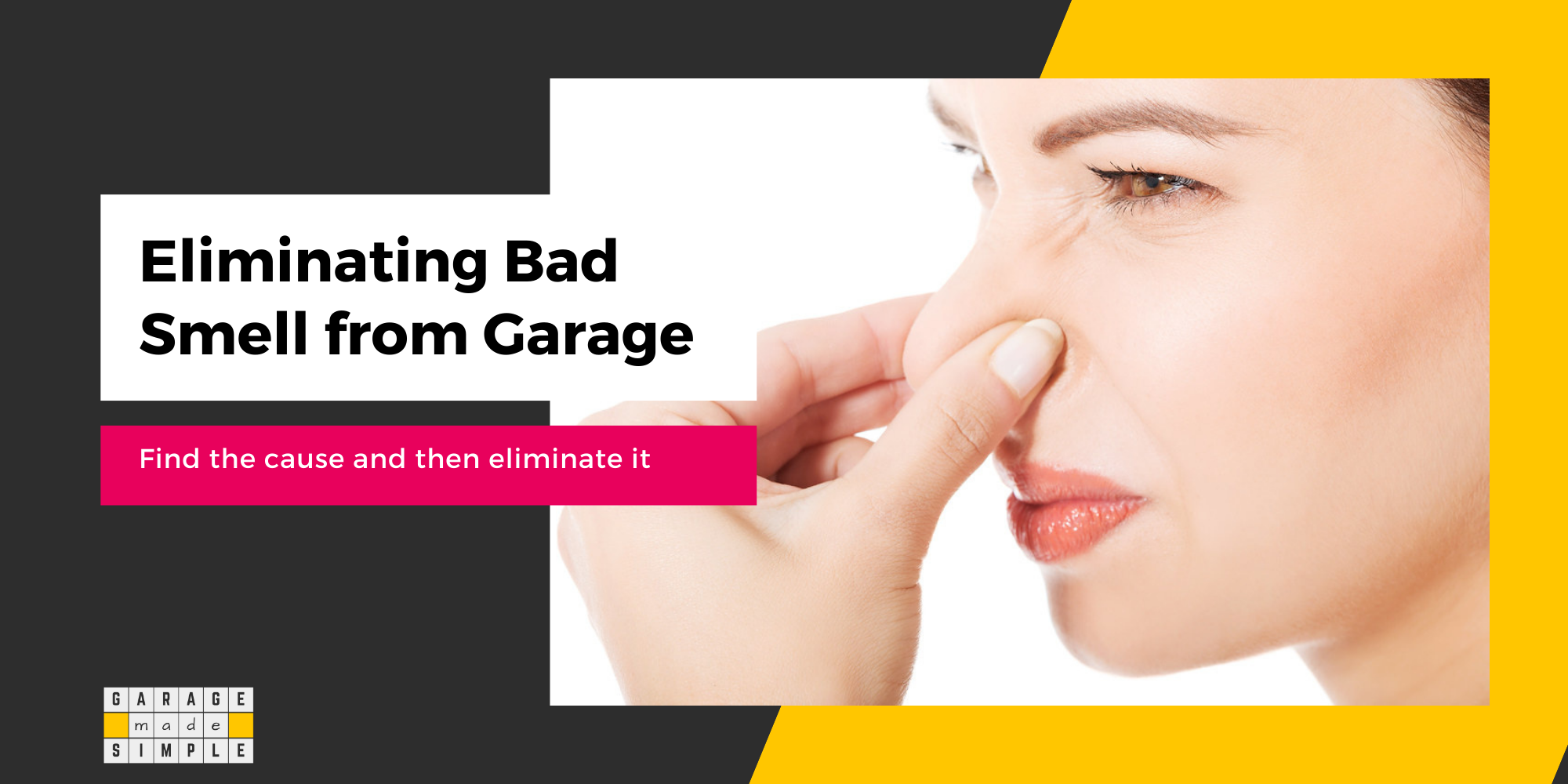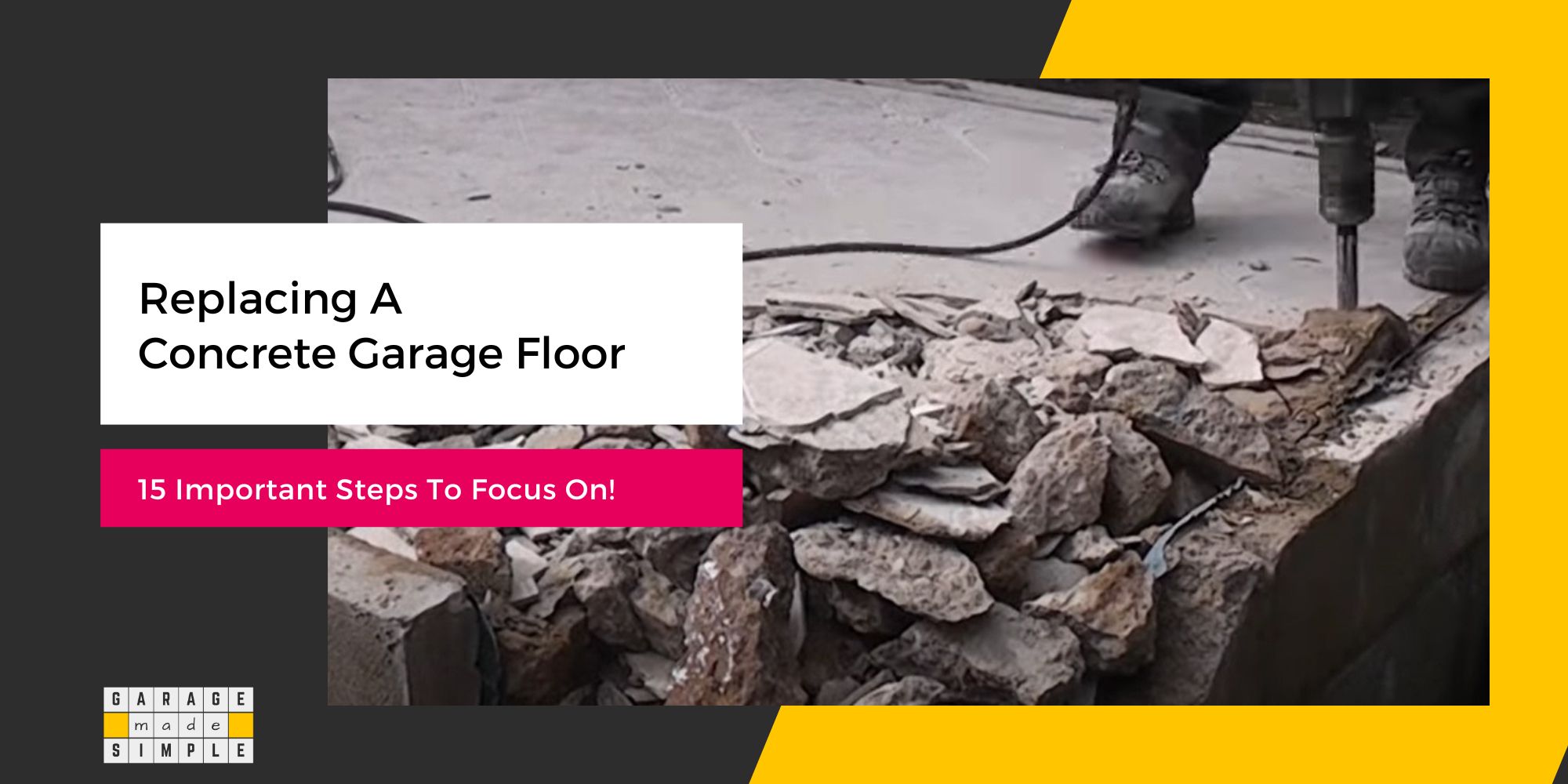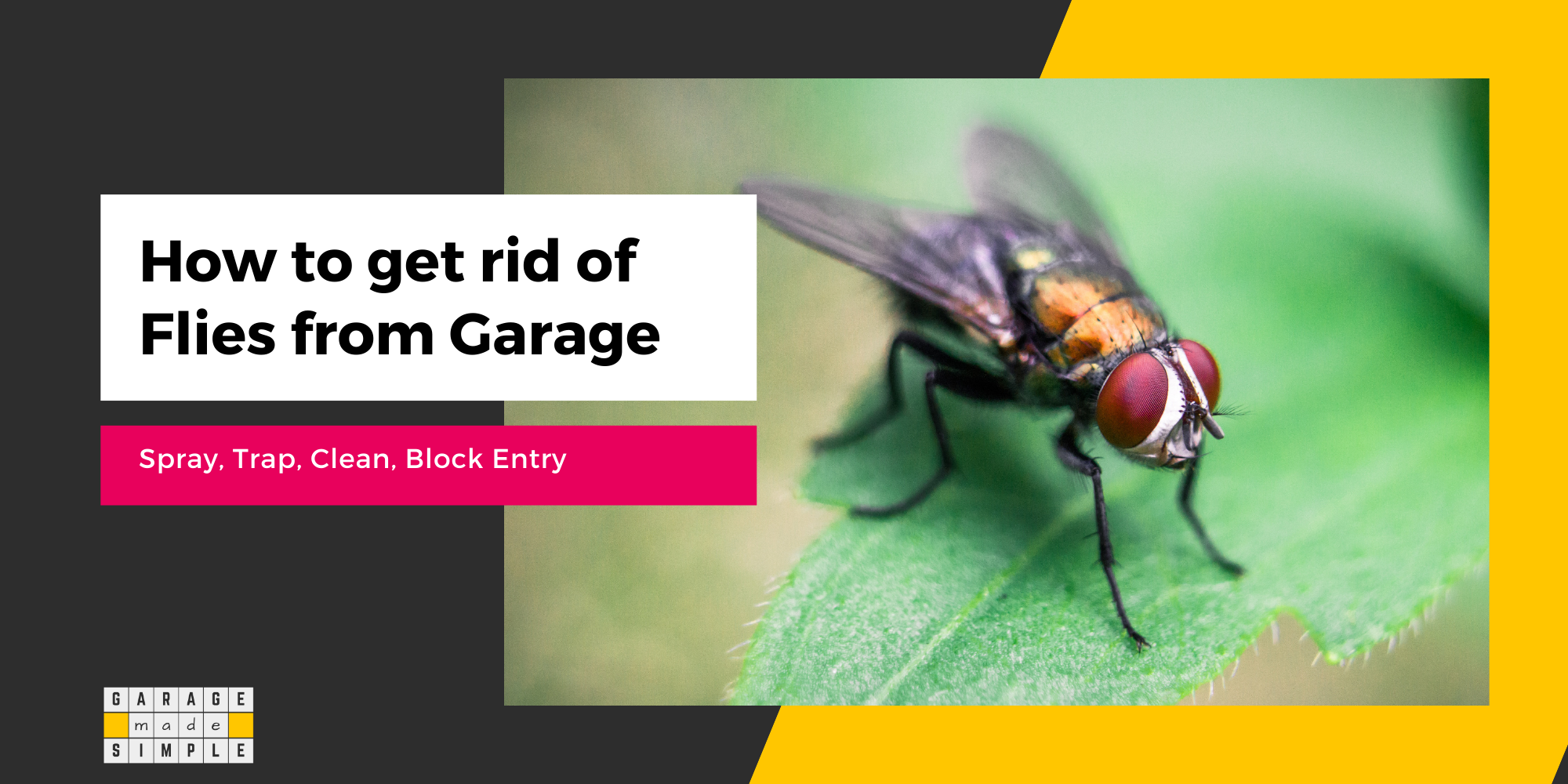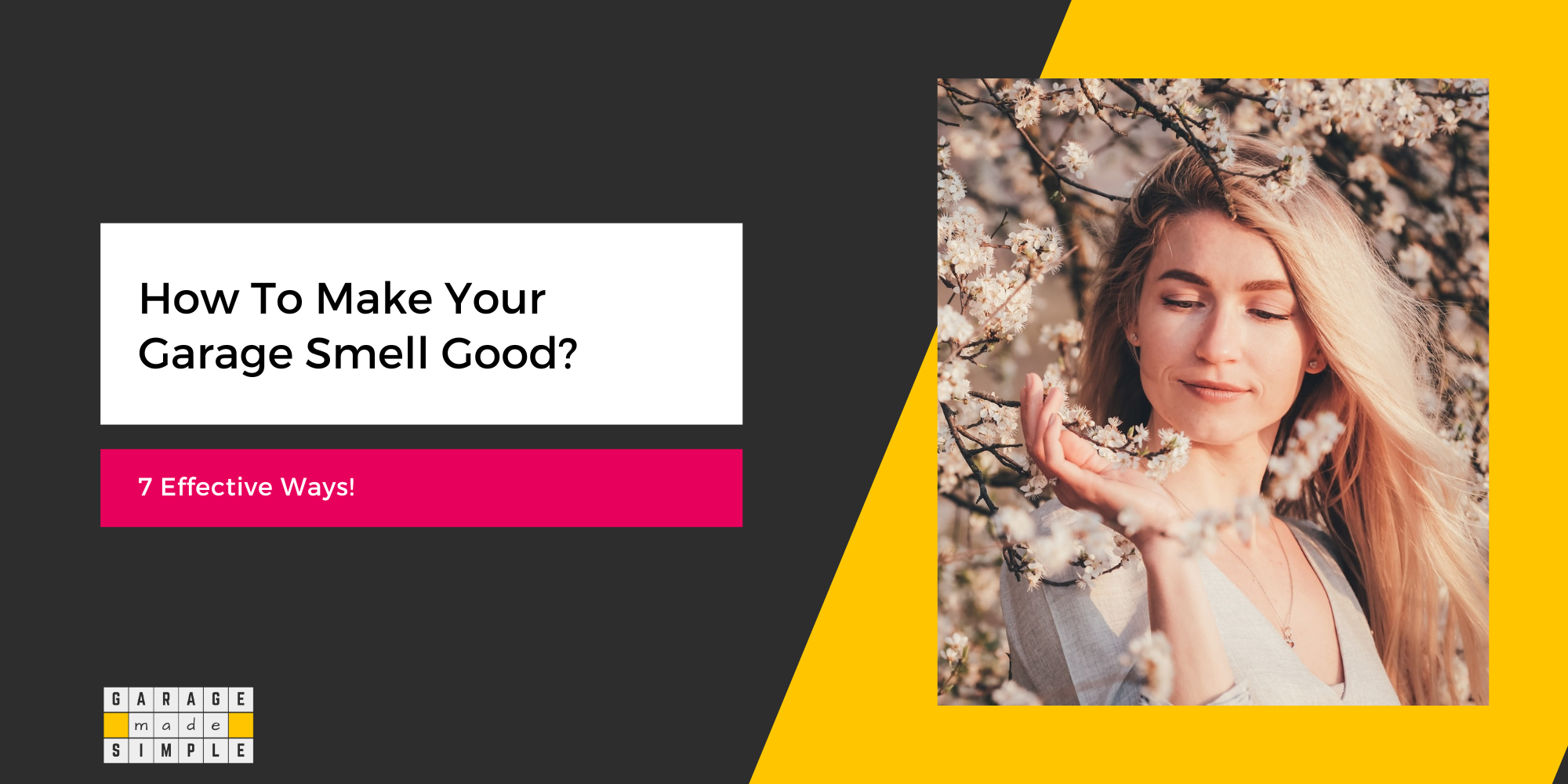Rust Converter vs Remover vs Primer: Rust Management 101
As an Amazon Associate, I earn from qualifying purchases.
What is the Difference between Rust Converter vs Remover vs Primer?
No one likes the reddish brown stains of rust. Nothing speaks “old” the way “rust” does. There are products to deal with rust. In fact there are way too many! Rust Converter vs Rust Remover vs Rust Primer.
Which is which and which is better when? Can be a bit confusing if you are new to DIY.
All three, that is, Rust Converter, Rust Remover and Rust Primer help you fight rust. But they do it in different ways. Which is better? You can not compare them. The right product to use depends on the nature of rust and the end result desired.
Rust Converter vs Rust Remover vs Rust Primer (in a nutshell)
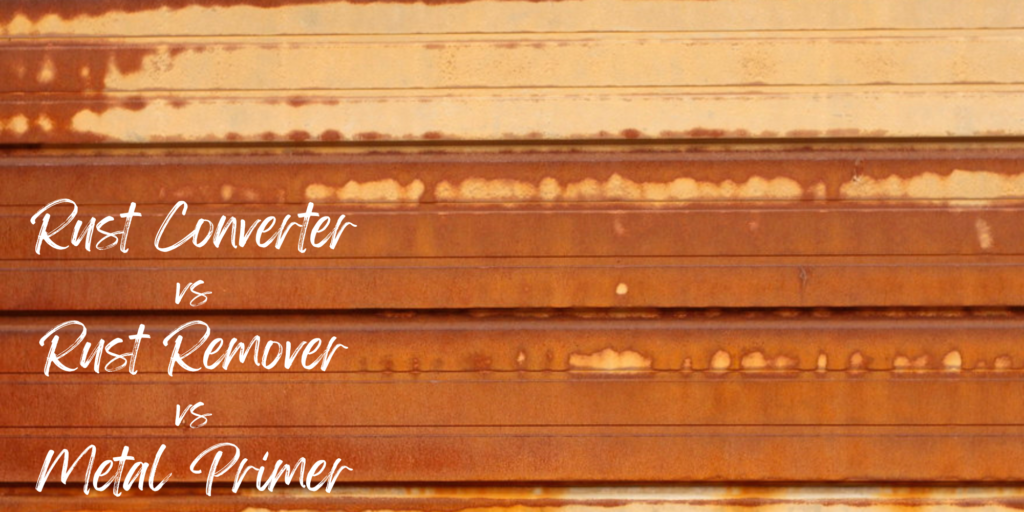
| Rust Converter | Rust Remover | Rust Primer | |
| Other Names | Rust Reformer | Rust Dissolver | Rust Inhibiting Primer |
| What it Does | Converts Rust (Iron Oxide) to Iron Tannate which is inert and can be overcoated | Reacts with the rust to form a water soluble compound that can be washed away | Facilitates bonding of top coat to metal and forms a protective barrier |
| Ideal Application | On heavily & extensively rusted objects that require to be painted | On rusted objects that need to be cleaned to bare metal and lubricated | On bare metal or objects with light spot rusting, that require to be painted |
| Overcoat | With oil or epoxy paint | Grease or lubricant, if required | With latex, oil or epoxy paint |
Garage is where rust lives. To begin with the garage does have a lot of stuff made of steel. The steel garage door, steel furniture & cabinets, the gardening equipment, etc. And the garage can get wet & damp at times.
NOTE: Using aluminum, wood or fiberglass instead of steel garage doors will eliminate rusting but then these materials have their own problems.
Sooner rather than later, rust appears.
The products available in the market to combat rust, fall into one of the three categories:
- Rust Converters
- Rust Removers
- Rust Primers
So what do they do and how do they differ from one another? Let me explain it in greater detail.
What is Rust?
Chemically speaking rust is “iron oxide” or more specifically “hydrated iron oxide”. Rust forms when iron or its alloy (steel) is exposed directly to damp or moist air.
The “oxidation” process combines iron and oxygen to form hydrated iron oxide in the presence of water. In very simple terms, the chemical reaction can be expressed as:
Iron + Oxygen + Water = Hydrated Iron Oxide (Rust)
Does Rust Spread?
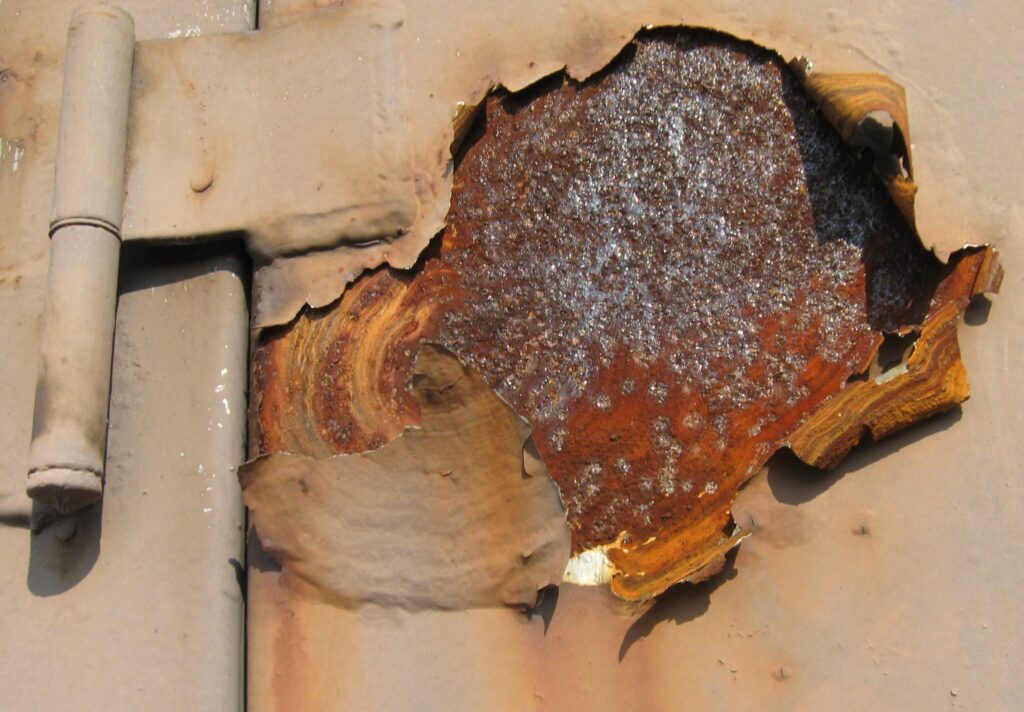
Yes and No.
Sometimes rust is referred to as a cancer or a virus that spreads unabated. Dramatic language but scientifically incorrect!
Rust is not a biological entity so it can not “multiply”. However, it can “creep” or be “accelerated”. So in that sense, it does spread.
Rusting requires the presence of oxygen and water, which must come in contact with the bare metal. Paints & Coatings are used to form a barrier and to prevent the metal from coming in contact with the moist air.
Rusting happens at spots where the paint has worn thin or has been scratched.This small section may allow moist air to “creep” under the adjoining intact paint film and result in corrosion under it.
The process of rusting can be “accelerated” by presence of:
- Salt. Rusting is an electrochemical reaction. Salt in the water lowers the electrical resistance of water and speeds up the reaction. (Coastal atmosphere and Deicing salt will accelerate rusting).
- Household cleaning products containing bleach or vinegar can accelerate rusting because they are “oxidative” or “acidic”.
What Exactly Does Rust Converter Do?
A Rust Converter is a chemical that reacts with rust and “converts” it to a black inert substance. Rust Converter is made up of two components
- Tannic Acid: The Tannic Acid reacts with Rust (Iron Oxide) to form chemically stable & inert Iron Tannate
- Organic Polymer: Provides a protective Primer layer
The resulting black coating is an excellent primer and can be overcoated with either oil or epoxy paint.
Is Rust Reformer the same as Rust Converter?
Yes.
Rust Reformer is just another word for Rust Converter. Some companies, such as Rust-oleum, like to call their products Rust Reformer.
This is what it says on their Rust-oleum Technical Data Sheet:
RUST-OLEUM® Stops Rust® Rust Reformer is a water based film forming product that chemically converts rust into a smooth, paintable surface, so there is no need to sand to bare metal.
You can purchase Rust-Oleum 248658 10.25 oz. Rust Reformer – Pack Of 6 on Amazon.
CORROSEAL is a very popular brand of Rust Converter. This is what the Corroseal Technical Data Sheet has to say:
Corroseal is a water base rust converter combined with a non-pigmented high quality latex metal primer. The converter turns rust into a barrier layer of non rusting magnetite.
You can purchase Corroseal Water-Based Rust Converter Metal Primer, Rust Converter – 1 Gal,82331 on Amazon.
So, as you can see Rust Reformer and Rust Converter, perform pretty much the same function.
Does Rust Converter Really Work?
Yes. Rust Converter or Rust Reformer is an easy and excellent solution to iron equipment and parts that are heavily and extensively rusted.
You may encounter heavy rusting on the bottom edge of your garage door as it is often immersed in water or snow. Keeping garage door parts, such as hinges, well lubricated will largely mitigate the rusting problem. But if in spite of that there is rusting, a Rust Converter is very useful in handling rust of this nature.
You should apply a coat of metal primer, if the object was not extensively rusted. Rust Converter will adhere to the non-rusted parts but will not provide any protection. It is not a replacement for a primer.
The primer coat (only when required) can then be over coated with a topcoat of your choice. Remember the Rust Converter will leave you with a black surface.
You can actually use a Rust Converter on anything made of iron or steel. Some example of where a Rust Converter can be used by you in your garage are:
- Auto Repair: Wheel hubs, truck beds, trailers, tractors
- Yard Equipment: Lawn mower, rakes, ladders, fences
- Deck Furniture: Iron chairs & tables, BBQ grills, fire pits
However, Rust Converter will not work on non-ferrous metal such as aluminum, copper, stainless steel or galvanized iron.
How do you apply Rust Converter?
Rust Converter or Rust Reformer can be sprayed or brushed on. The application procedure is:
- Clean the rusted area to remove all dirt, grease, oil, salt etc. by washing the surface with soapy water
- Rinse with fresh water and then let the surface dry up
- Use sandpaper or wire brush to remove loose, flaking rust
- If using a spray can, shake well before use. Spray in smooth motion for even spread
- If brushing, take out a small quantity in a plastic tray. Apply evenly over the rust. Do not return unused rust converter to the can or in any way contaminate it with rust
- In both cases, do not apply the rust converter over a non-rusted surface. You need a metal primer for that area
- Let the rust remover do its magic for 24 hours. Then you can prime & paint
What is Rust Remover and How does it Work?
Rust Converter vs Rust Remover. In fact a Rust Remover is quite the opposite of a Rust Converter.
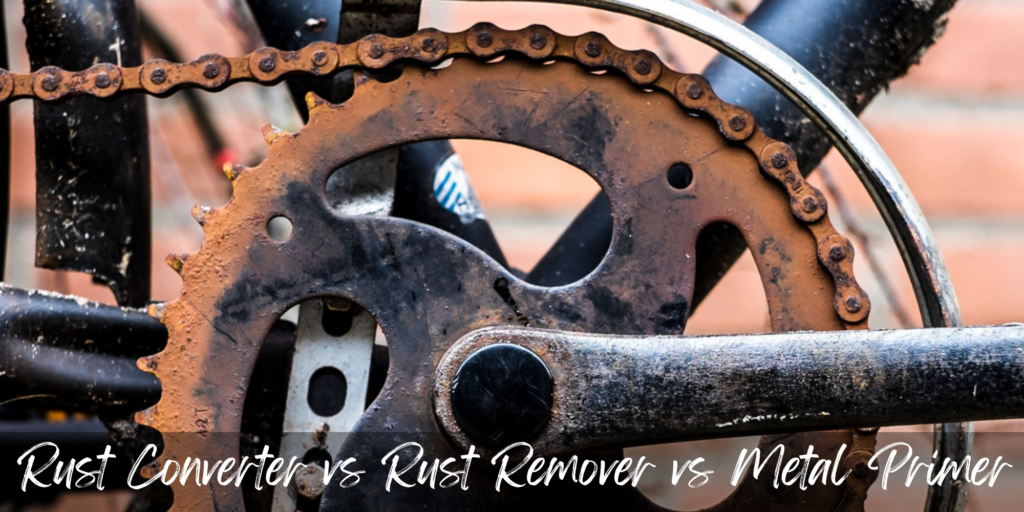
A Rust Converter, chemically modifies the rust into an inert chemical. This inert chemical continues to adhere to the original metal. On the other hand a Rust Remover dissolves the rust and removes it from the original metal.
Unlike a Rust Converter, a Rust Remover leaves you with bare metal.
In a situation where you need to expose bare metal from a rusted surface, you can either use a mechanical process (such as a coarse sandpaper or a wire brush) or a chemical process (such as a rust remover).
A Rust Remover has phosphoric acid as its main ingredient. The acid reacts with rust to form a water soluble compound. This can then be removed very easily. Acid free rust removers are available too.
WD-40 is undoubtedly the most well known rust remover in town. WD-40 Specialist® Rust Remover Soak quickly dissolves rust and restores tools, equipment, and surfaces to bare metal without chipping, scraping or scrubbing. It is water based, non acidic, VOC free and completely eco friendly.
You can purchase WD-40 Specialist Rust Remover Soak, One Gallon on Amazon.
What is Rust Remover Used For?
You need to use a rust remover when you want to remove the rust and expose bare metal. Subsequent to that, you could prime & paint the object, leave it as it is or apply a lubricant.
Most commonly, a Rust Remover is used when there is no intention to paint. Moreover, the part should be small enough so that it can be soaked in the Rust Remover solution.
Ideal uses for a Rust Remover are to clean rusted tools, hardware, auto parts etc. In case it is not possible to disengage the part, use a spray can. Alternatively, dip an absorbent rag in the Rust Remover and cover the rust with it.
You will be amazed how squeaky, rusty hinges or rusty garden shears start looking (and working) like new after a dip in Rust Remover.
How do you Use a Rust Remover?
Rust Removers come in liquid form and you need to immerse the rusted part in this liquid. The procedure is:
- Clean the rusted area to remove all dirt, grease, oil, salt etc. by washing the surface with soapy water
- Rinse with fresh water and then let the surface dry up
- Use sandpaper or wire brush to remove loose, flaking rust
- The above will increase the effectiveness of the Rust Remover
- Pour the Rust Remover into a container so that the object being treated is completely submerged
- Time required to remove the rust completely depends on the extent of the rust. Light rust may require just a 1-3 hour soak. Heavy rusting may require an overnight soak or even a full 24 hours.
- Once the rust is all gone, you can take out the part, rinse it with clean water and you are good to go
What Removes Rust Stains from Concrete?
You can get rust stain marks on your concrete garage floor, if a rusty garden rake or shear has been lying on it for a while. A topical sealer, epoxy coat and clear top coat will prevent that too an extent.
But if your concrete garage floor was not protected then how do you get rid of that ugly, reddish brown stain? Special Concrete Rust Removers can help you do that!
Concrete Rust Remover is a powder that you can mix with water and apply on the stain. It removes rust stains from concrete, stone, brick and driveways. As it forms a gel, it can even be applied to garage walls. It is easy, safe and really works.
You can purchase Singerman Laboratories Rust Remover for Concrete (22 oz makes one gallon) on Amazon.
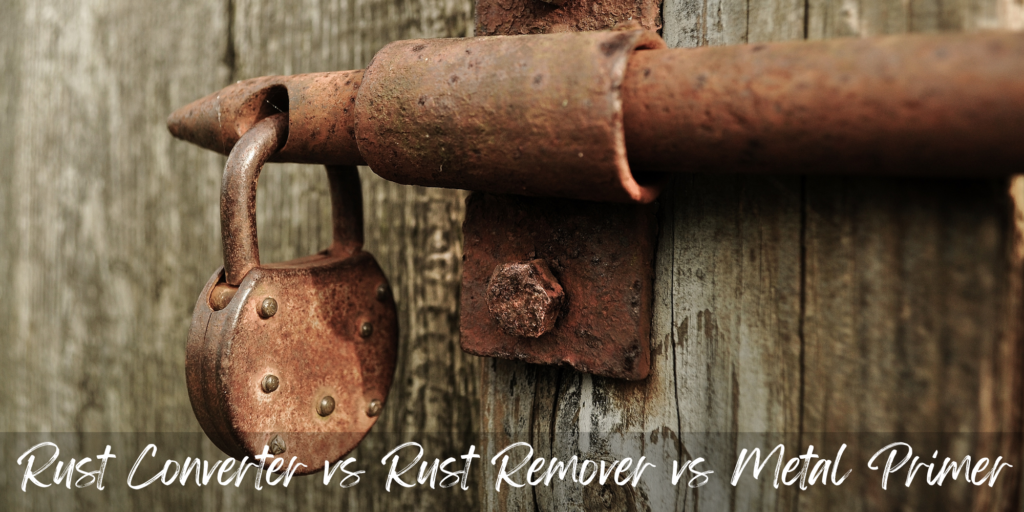
What is Metal Primer and Why do You Need It?
Metal Primer is the first coat that is applied to a metal before applying the subsequent coats of paint. Metal Primer serves two functions.
- As a Bonding Agent: Metal Primer facilitates the adhesion of the top coat with the metal substrate.
- As Protective Barrier: Metal Primers are loaded with extenders. The extenders provide body to the primer film and acts as a protective barrier.
Use of Metal Primers promotes topcoat adhesion and helps prevent chipping, cracking and peeling. Metal Primer eliminates the need for multiple coats of enamel finish.
Rust-Oleum® Stops Rust® Primer Sprays come in two versions:
- Clean Metal Primer: designed for lightly rusted, bare metal, or previously painted surfaces. (Link for ordering on Amazon:12 oz. White Clean Metal Primer Spray Paint [Set of 6])
- Rusty Metal Primer: designed for heavily rusted surfaces only (Link for ordering on Amazon: 12 oz. Rusty Metal Primer Spray Paint [Set of 6])
Metal Primers can come with different adjectives such as Rusty Metal Primer, Clean Metal Primer, Rust Inhibiting Metal Primer, Anti-corrosive Metal Primer, etc. In essence, they perform the same function.
How do you Apply Metal Primer?
Metal Primers can be sprayed or brushed on. The application procedure is:
- Clean the area to primed to remove all dirt, grease, oil, salt etc. by washing the surface with soapy water
- Rinse with fresh water and then let the surface dry up
- Use sandpaper or wire brush to remove loose, flaking paint or rust
- If the surface to be primed is too smooth or glossy, you will need to scarify it by using a sandpaper. Else the Metal Primer will not adhere
- If using a spray can, shake well before use. Spray in smooth motion for even spread
- If brushing, mix primer well before taking out a small quantity in a metal can. Dilute to brushing consistency, if required
- Apply evenly with a smooth, light yet firm brush strokes
- Overcoat with two coats of finishing paint, once the primer is touch dry but within 48 hours
Thank you very much for reading the post. I do hope you found it informative and useful.



